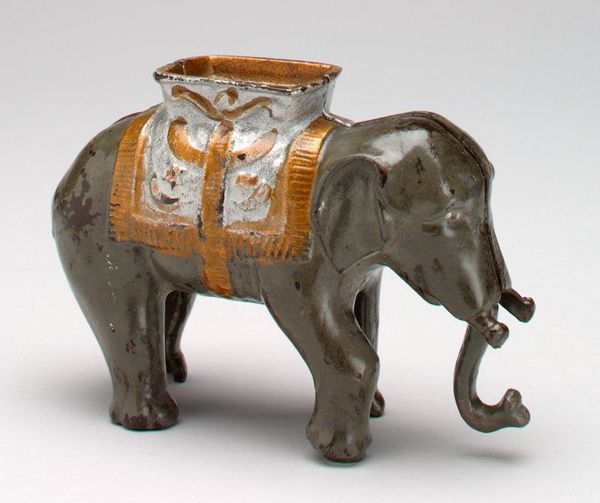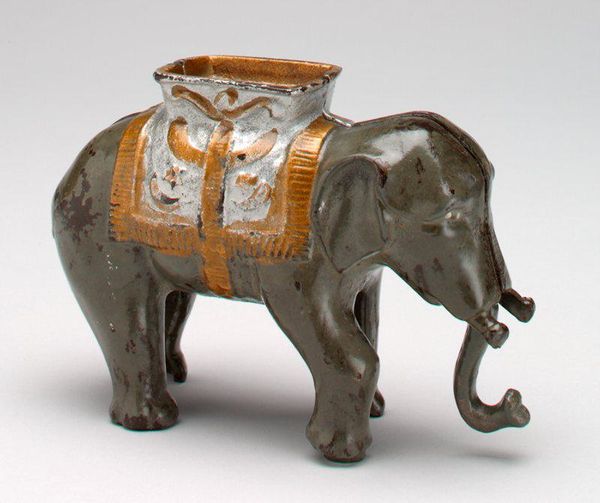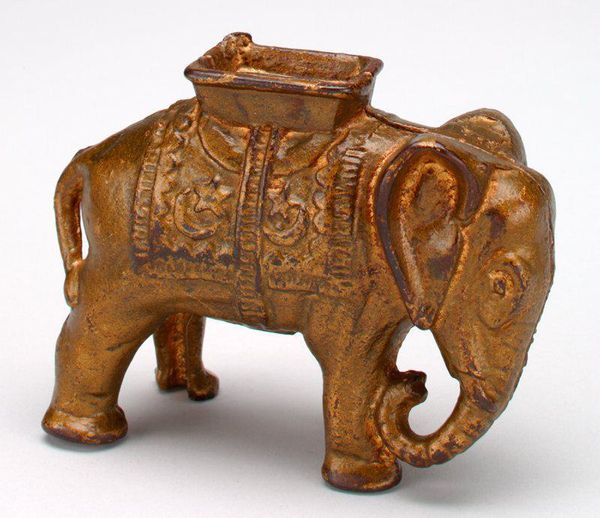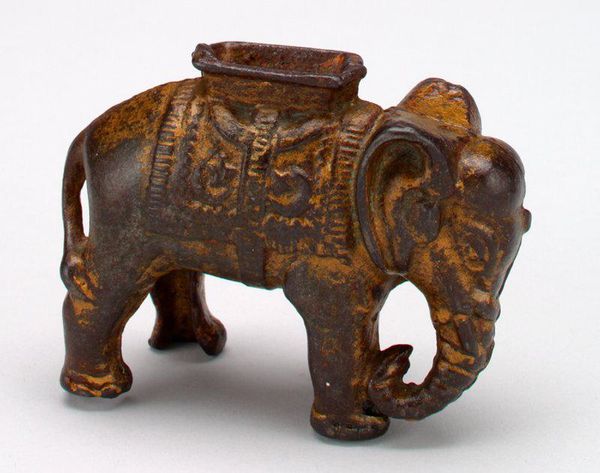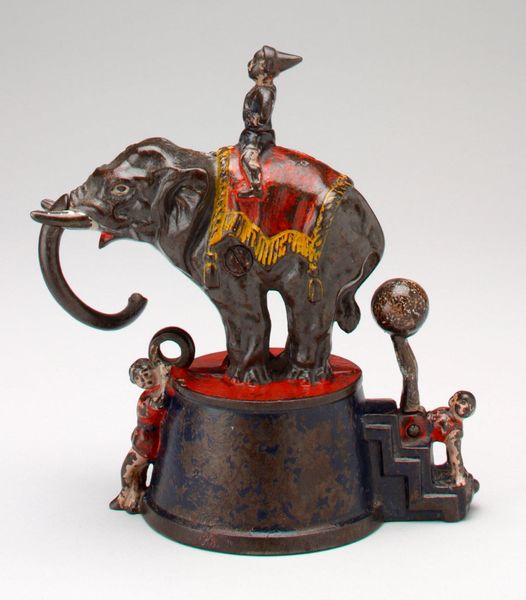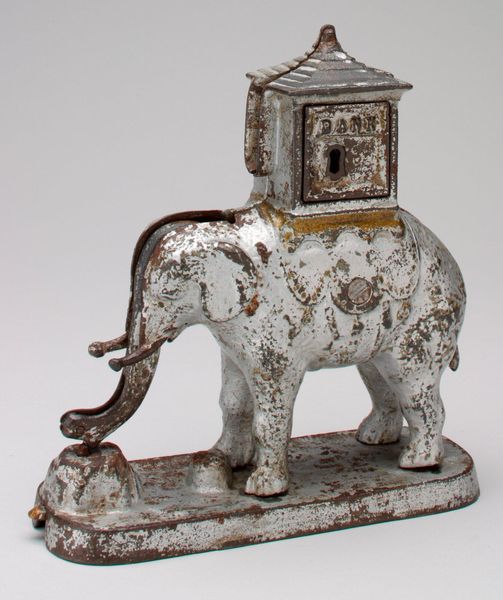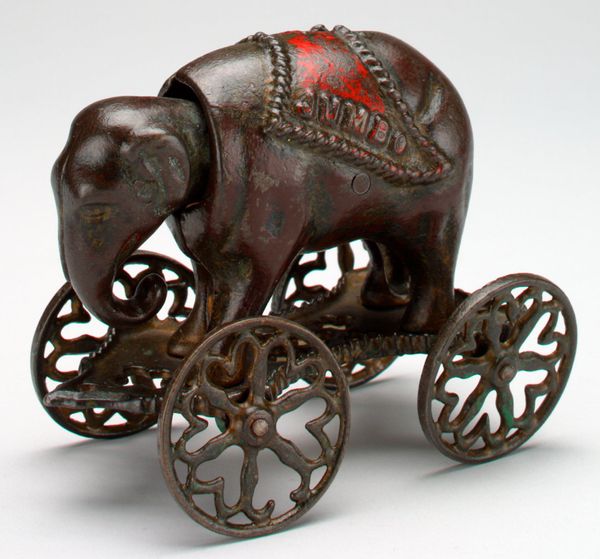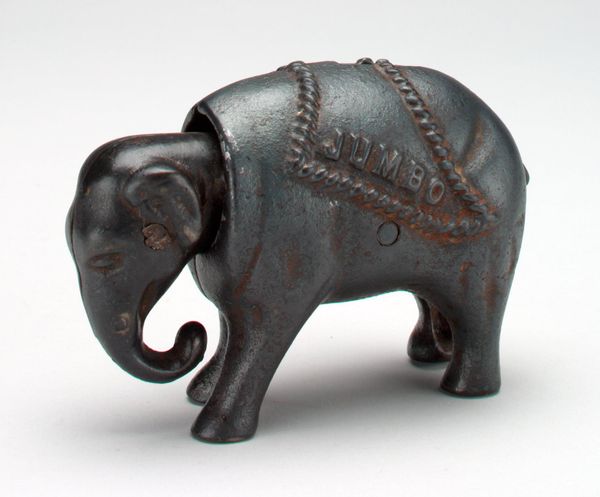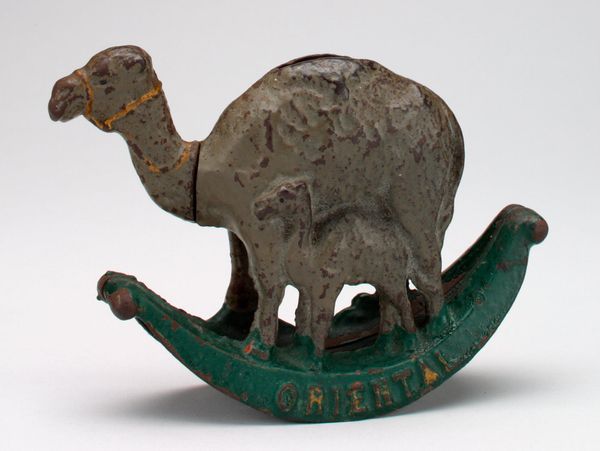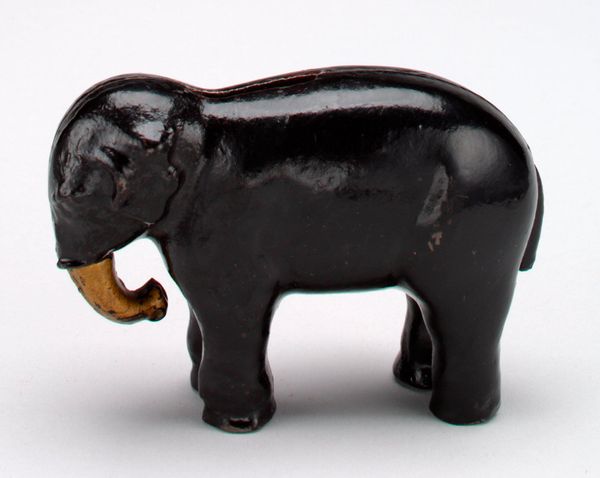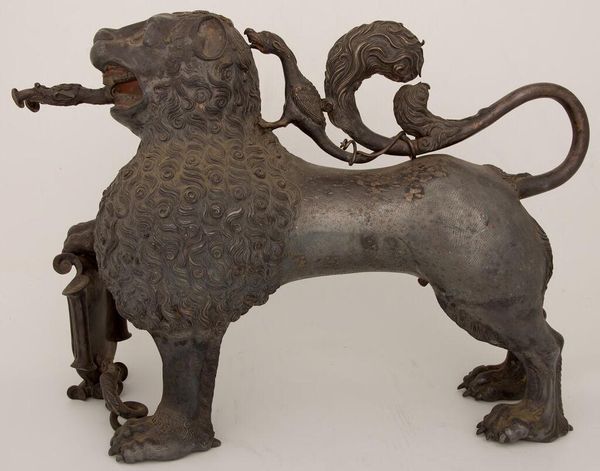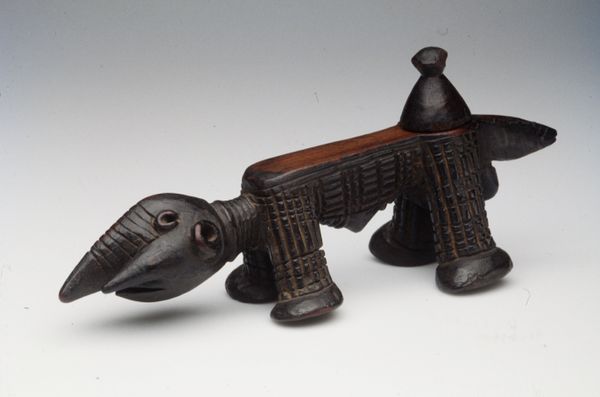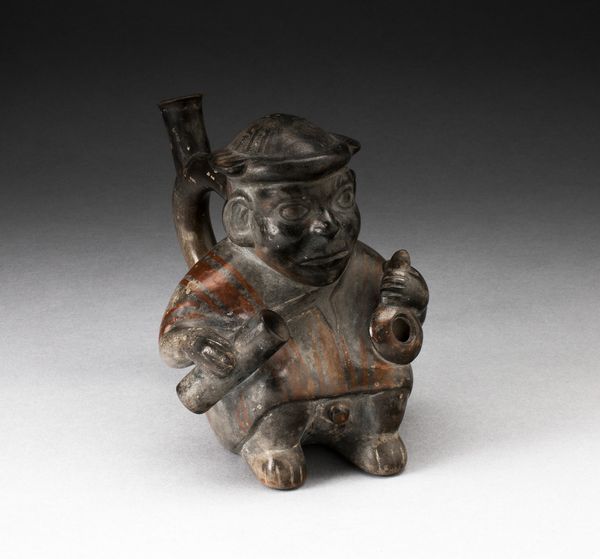
-Elephant Howdah (Man Pops Out)- mechanical bank c. 1880
0:00
0:00
pigment, metal, bronze, sculpture, wood
#
3d sculpting
#
pigment
#
metal
#
bronze
#
figuration
#
sculpture
#
orientalism
#
wood
Dimensions: 5 15/16 x 6 11/16 x 2 1/2 in. (15.08 x 16.99 x 6.35 cm) (open)
Copyright: Public Domain
Curator: Here we have a whimsical mechanical bank, “Elephant Howdah (Man Pops Out),” produced by the Enterprise Manufacturing Company around 1880. It’s currently held in the collection of the Minneapolis Institute of Art. Editor: I'm immediately struck by the contrast between the stoic, almost solemn elephant and the comical figure poised to pop out. There's something delightful about the tension there. I also appreciate the evident wear and tear—it gives it a certain charm. Curator: Absolutely, it's a fascinating object on many levels. These mechanical banks were incredibly popular in the late 19th century. They weren't just toys; they reflected the burgeoning industrial age and often promoted certain cultural narratives, particularly those tied to exotification. This one definitely leans into a fascination with the “Orient," what we might now consider orientalism. Editor: From a formal perspective, note the craftsmanship of the metal casting, combined with wooden and pigmented details. The lines of the elephant, though somewhat stylized, are surprisingly elegant. And the red howdah stands in stark contrast to the muted brown of the elephant. Curator: Precisely, and consider the social context. At the time, there was significant industrial growth coupled with cheap labor. This allowed manufacturers to produce such detailed and interactive pieces for a burgeoning middle class keen on novelty items. Editor: It's clever how they integrated function and form, with the act of depositing a coin triggering the mechanism for the figure to emerge. The design underscores a narrative that frames saving money as entertaining. Curator: Moreover, items like these propagated certain visual stereotypes and narratives. The depiction of Asian figures in popular culture, particularly in relation to colonial enterprises, was a very common theme. Editor: Yes, one cannot ignore the object’s potential reinforcement of racial stereotypes or power dynamics of the time, so viewing it critically becomes necessary. However, it's interesting to focus also on its artistic construction. It brings to mind a history book that's been crafted using colors and forms rather than printed text. Curator: Indeed, considering it a lens through which we can investigate popular culture and the politics of representation offers valuable historical insights, doesn't it? Editor: It does. What begins as a curious toy morphs into something more complex, and maybe slightly troubling. That said, as a physical object, its design offers some remarkable compositional components.
Comments
No comments
Be the first to comment and join the conversation on the ultimate creative platform.
